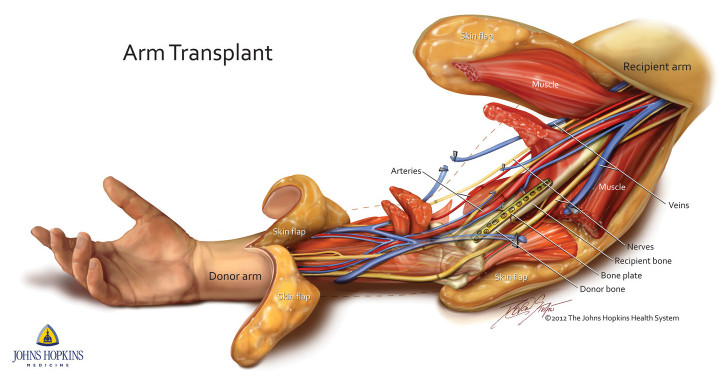Arm Transplants: How Is A Vascularized Composite Allotransplantation Done?

Thanks to modern medicine, we can replace nearly any body part, even the arm. Here’s a quick run through of the complicated, yet fascinating, surgical skill involved in successfully executing an arm transplant.
The procedure is officially known as a “vascularized composite allotransplantation,” but has also been referred to as CTA, or "composite tissue allotransplantation," Johns Hopkins Medicine reported. This is an umbrella term used to refer to transplants composed of several kinds of tissues such as the hand, arm, or face.
Read: Chinese Plan Head Transplant For Paralyzed Patients
Donor arms are harvested from a fresh cadaver and kept on ice until they are ready to be transplanted onto a recipient. Once a patient has been prepared for surgery, the donor arm is carefully connected to the patient's remaining limb. Doctors must make sure to connect bone, tissue, and nerve to make the transplant complete. According to U.S. Army.com, doctors usually practice the procedure on a dead body up to four times before they perform on a living patient.
As with all transplant operations, after the procedure is done, a patient make take autoimmune suppressant medications to ensure their body does not reject the new limb. While these medications were once very harsh on the body, destroying the liver and increasing risk for cancer, new developments have made theses necessary medications less dangerous.
After the operation, it can take time for the nerves to regenerate and form new connections. According to U.S. Military.com, nerves regenerate at a rate of about one-inch per month, and though the process is long, the outcome is worth the wait.
See Also:
Can An Organ Transplant Change A Recipient's Personality?
10 Body Parts Doctors Can Replace With Transplants, Stem Cells, Or 3D Printing



























